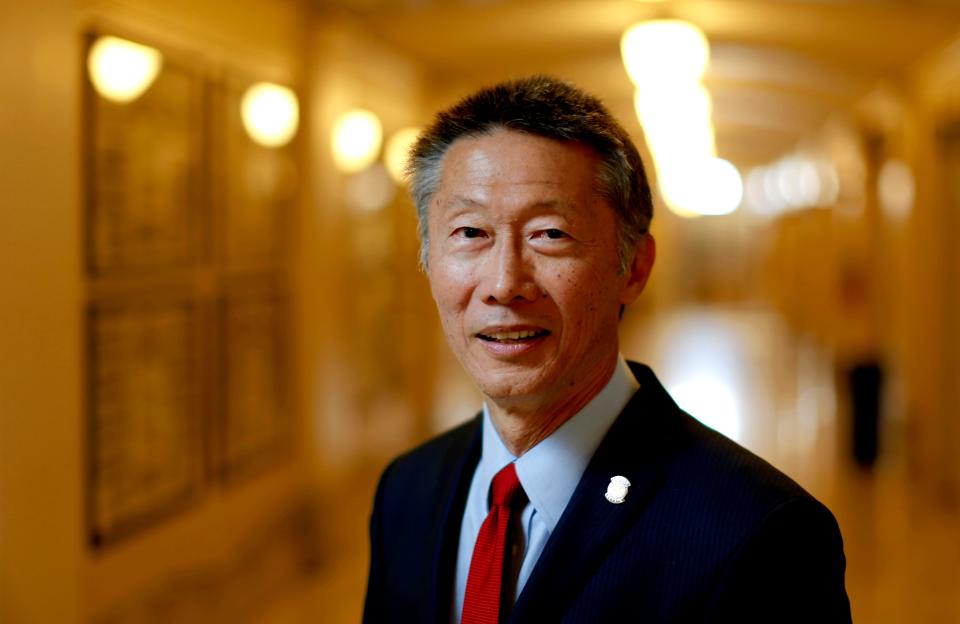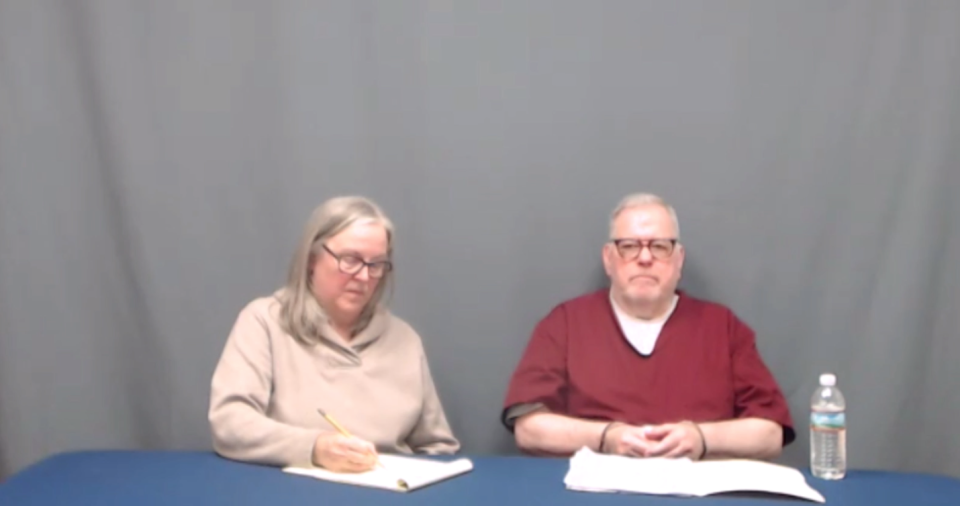Oklahoma death row inmate Bigler Jobe 'Bud' Stouffer II denied execution stay
After more than three decades on Oklahoma's death row, convicted murderer Bigler Jobe "Bud" Stouffer II is running out of time.
His execution is set for Dec. 9, and he was denied a stay Tuesday in Oklahoma City federal court.
Now he is asking the 10th U.S. Circuit Court of Appeals in Denver to intervene.
Stouffer, 79, is on death row for fatally shooting Putnam City elementary school teacher Linda Reaves on Jan. 24, 1985. He claims he is innocent but there have been no freedom marches or vigils for him like there were for Julius Jones.
The only ones speaking out against Stouffer's execution so far are death penalty opponents and his attorneys.
"It can be difficult to understand why Jesus calls us to pray and be merciful for people like Stouffer, but Jesus asks us to be better. He shows us the way and empowers us to find compassion in our hearts, even for the guilty," said the Most Rev. Paul S. Coakley, the archbishop of Oklahoma City.
Stouffer asked U.S. District Judge Stephen Friot for a stay after filing his own legal challenge to the state's lethal injection procedure.
He said he believed the state would not seek to execute him until after a trial next year over a legal challenge brought by other death row inmates.
He was not allowed to participate in that legal challenge when it was filed in 2014. He sought to intervene on his own in that case months later but was denied.
Like the other inmates, he complains the state's use of the sedative midazolam will expose him to excruciating pain in violation of the constitutional prohibition against cruel and unusual punishment.
He pointed in his legal filings to media accounts that at the last execution in Oklahoma inmate John Marion Grant convulsed and vomited as midazolam was administered.
In denying the stay Tuesday, the judge ruled Stouffer had not shown a substantial likelihood of succeeding in his challenge.
The judge said the last execution Oct. 28 does not call into question the efficacy of midazolam as the first drug in the lethal injection process.
The judge concluded — based on other eyewitness accounts — that Grant did not have convulsions or seizures and was already unconscious when he threw up.
The judge specifically noted the testimony Monday of Dr. Ervin Yen, a longtime Oklahoma City anesthesiologist,

Yen is a former state senator now running for governor. He watched the execution in person and appeared Monday as a witness for the state.
Yen described the execution as fast and smooth and said Grant likely died from the midazolam alone before the other drugs were administered.
He said Grant appeared to become unconscious 30 to 45 seconds after midazolam was administered. Yen said the inmate then stopped breathing and made a "rocking boat motion" as his body attempted to compensate.
"I've seen seizures before," Yen said. "That's not what it looked like."
Grant then appeared to cough as many as 20 times and regurgitated food from his stomach, according to the testimony.
Stouffer's attorneys immediately appealed the denial of the stay. Attorney Greg Laird called the judge's ruling disappointing and said Stouffer should be treated like everybody else and have the opportunity to get his day in court.
Stouffer also still has a longshot bid at getting clemency from Gov. Kevin Stitt.
The Oklahoma Pardon and Parole Board voted 3-2 last week to recommend clemency after voicing concerns about how the last execution was carried out.
Stitt is being asked to commute the death sentence to life in prison without the possibility of parole.
Story continues below.

More: Oklahoma to allow death row inmates a personal spiritual leader in execution chamber
His execution was scheduled along with Grant, Jones and other inmates who were kicked out of the 2014 legal challenge.
Friot kicked those inmates out because they refused to designate an alternative method of execution if their challenge succeeded. The other inmates in the lawsuit picked alternatives.
The U.S. Supreme Court has made picking an alternative a requirement for challenging execution procedures. Stouffer in his own legal challenge picked the firing squad as his first alternative.
Stouffer was convicted at his first trial and a retrial of murdering Reaves and shooting with intent to kill a homebuilder, Doug Ivens.
Reaves was dating Ivens, who was in the middle of a divorce. Stouffer was dating Ivens' estranged wife.
Prosecutors alleged the motive for the shooting was a $2 million life insurance policy and that he staged the crime scene to make it look like a murder-suicide.
His plan fell through because Ivens survived.
Ivens crawled to the phone after Stouffer shot him one final time, in the face, according to evidence in the case. Stouffer had planted the gun in Reaves' hand before leaving.
He later told his girlfriend in a phone call that he was afraid she would go back to her husband and that he just went berserk, according to testimony.
"I left them both for dead," he said, according to the testimony.
This article originally appeared on Oklahoman: Oklahoma death row inmate Bigler Stouffer denied execution stay

